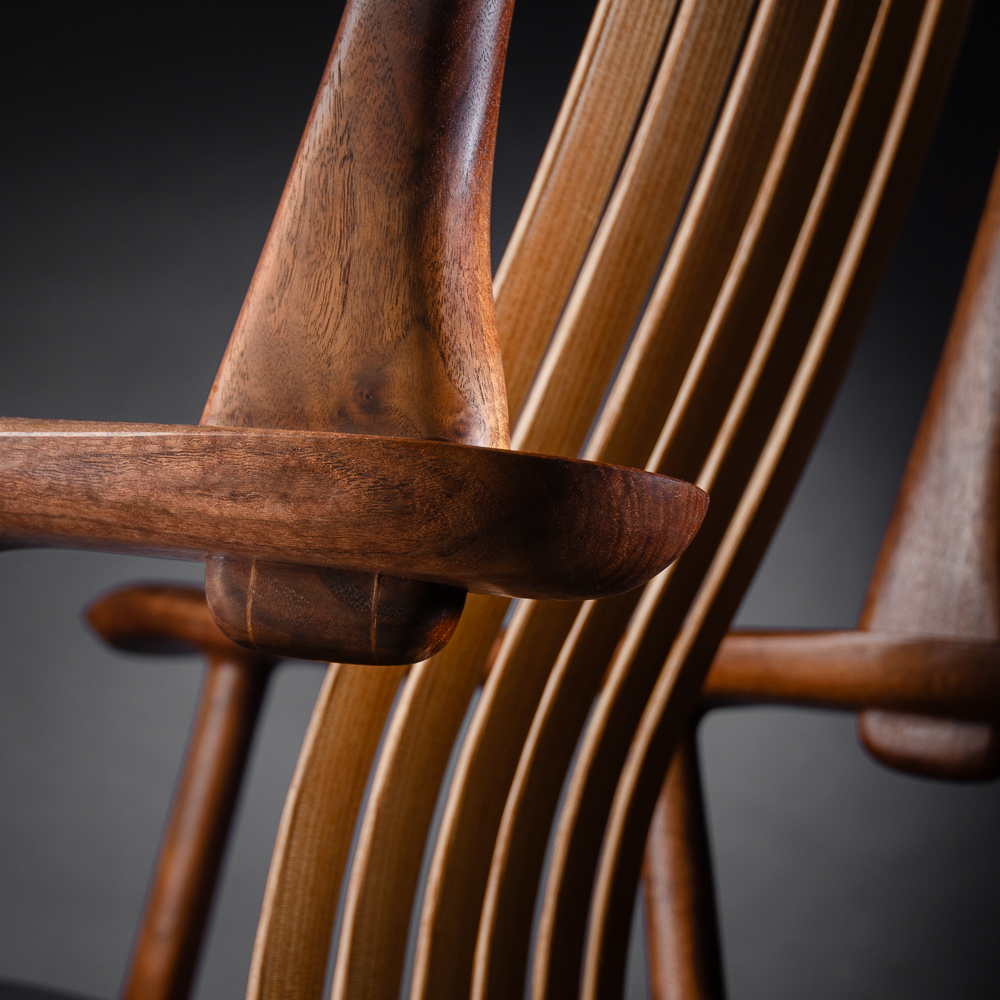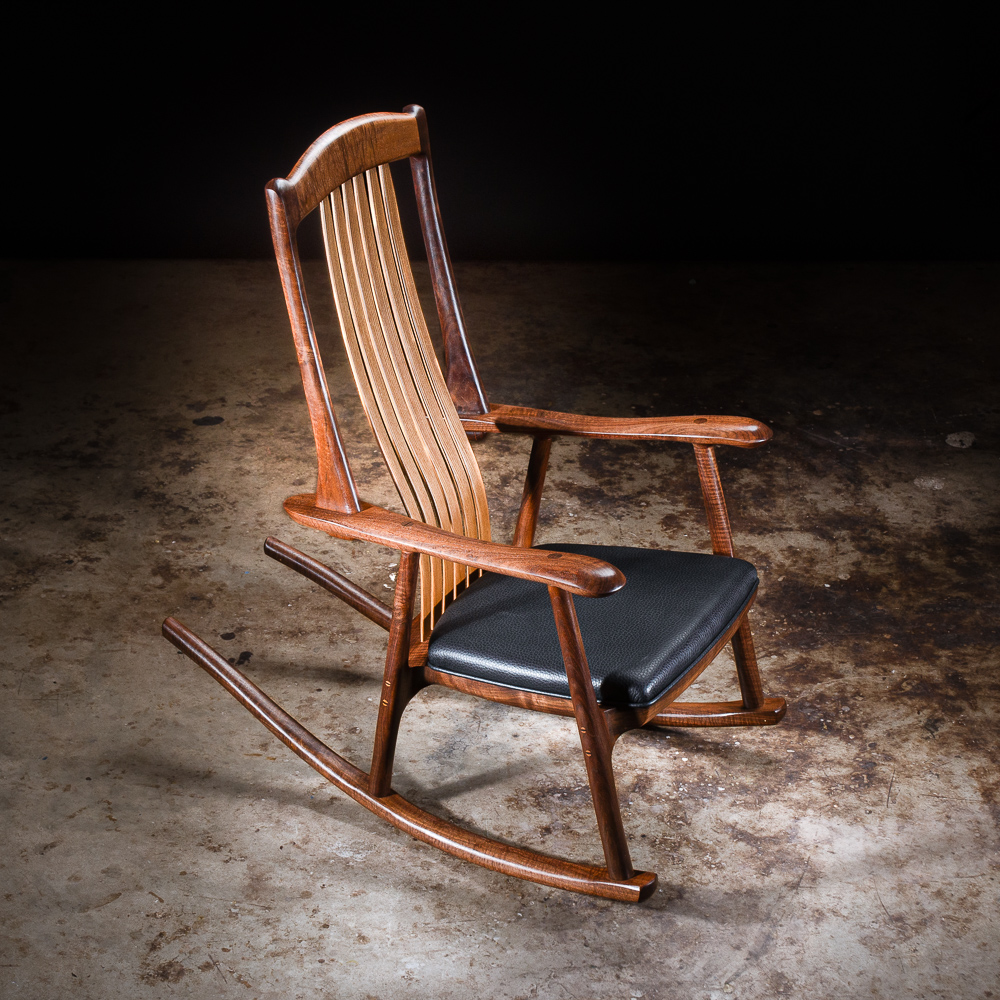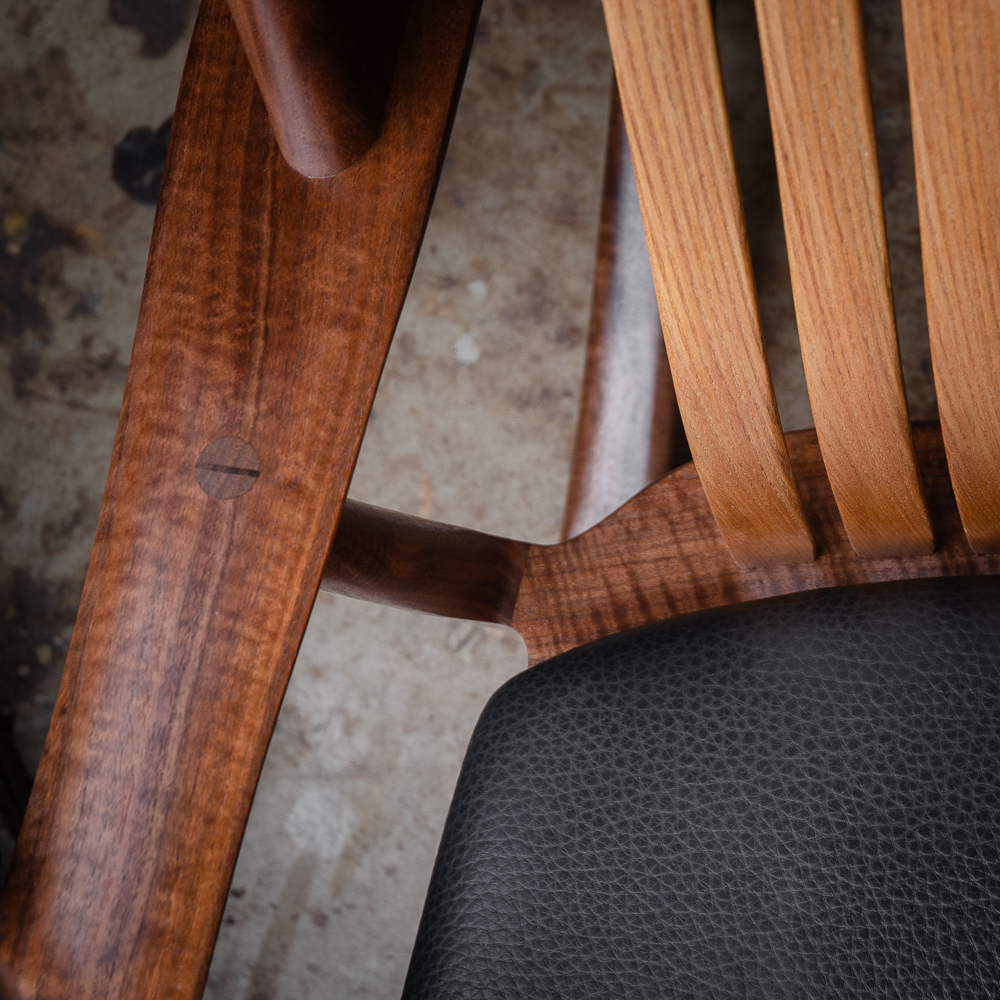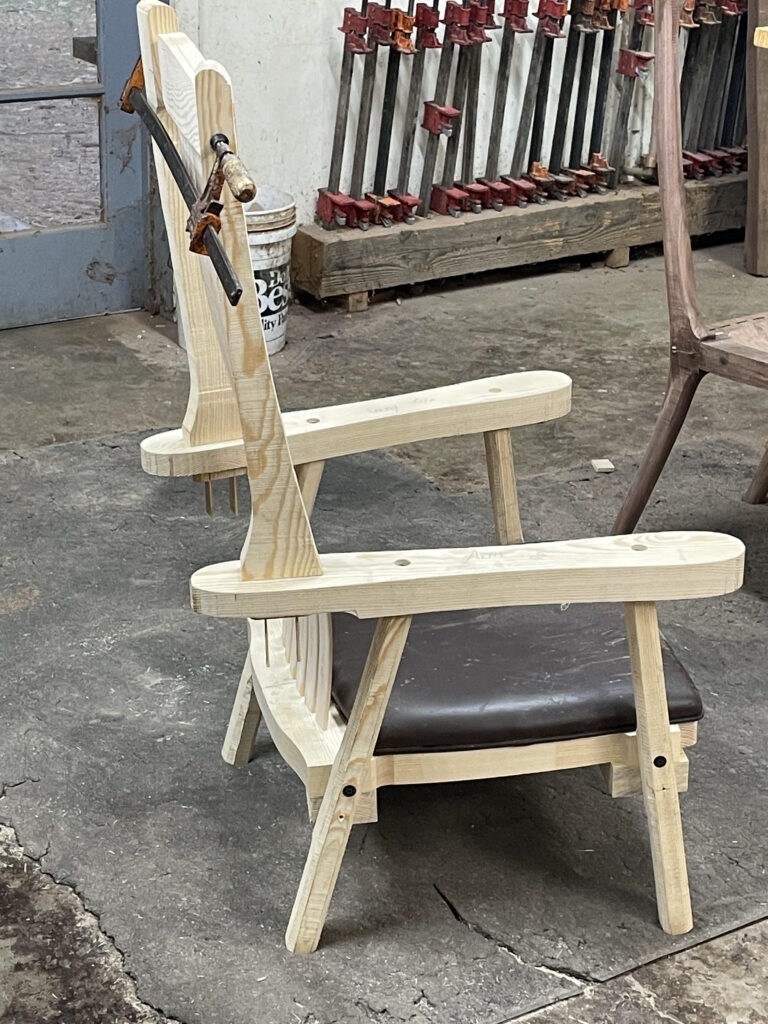
The new Kenebec Floating Back Rocker in Claro walnut and Spinneybeck leather
We wanted to make a new rocking chair, re-thinking all aspects of the process from our perspective as designers and makers of handmade furniture.
Tor wanted something radically new, a mutation, Bob wanted classic Darwinian evolution. Bob was leading the charge on this one. We settled on transformation from the past.

The signature joinery and flexible back slats of the Kenebec Rocking Chair
We love Scandinavian Design: Hans Wegner, Finn Juhl and Peder Moos. We studied their work in preparation for this project. Juhl’s Chieftain Chair particularly caught our eye.
We make comfortable seating and are recognized for this trait. We didn’t want to lose this reputation, creating a new piece of chair sculpture that no one would sit in was not what we were after. We decided to include some of our known design successes, in particular our back support system.

Unlike our South Yuba Rocking Chair, the Kenebec has an upholstered seat
We also wanted to move away from the Sam Maloof style of chair without abandoning it completely. Wegner and Maloof enjoyed contoured molded joints as did Moos. It’s a Danish Modern thing.
We settled on an approach where the rocker would appear to be grown out of our 50 years of designing and making chairs, remaining part of our style, the contemporary Arts and Crafts tradition. We also wanted a soft seat.

The arm to backpost to seat section of the chair is where it all comes together
Bob worked with a pencil to start and Tor offered critiques and suggestions, significantly changing the direction at several key steps in the design process. Bob built three ponderosa pine prototypes in an evolution of ideas, function and construction. Tor used his Rhino computer program to design some joints and made jigs to execute this joinery. The result is a chair that is comfortable, beautiful, and original.

An early prototype in ponderosa pine
The main design break through was Tor’s idea of using the arm as a cantilevered platform to support the back post which in turn would capture the headboard and receive our “Floating Back Slats”. To accomplish this we looked closely at the physical demands on this component and sketched a form that reflects the forces.
It was an inverted ax handle. The shape of the ax handle describes the forces at play. So does our back post.
“For me it was an epiphany. I was drawing a functional form to be strong and durable, everyone saw it as an ax handle: maybe it should be called “The Ax Handle Rocker” –Bob

The “axe handle” style joinery of the back post to the arm is one of the distinctive features of this chair
Working in soft pine at the prototype stage allows one to see and feel the strength of the various aspects of the chair knowing that if it is strong in pine it will be even better in a hardwood. Of course it also allows us to sit in the chair and walk around and observe its form from all sides without the expense of hardwood lumber.

The stages of the Kenebec Rocking Chair from start to finish